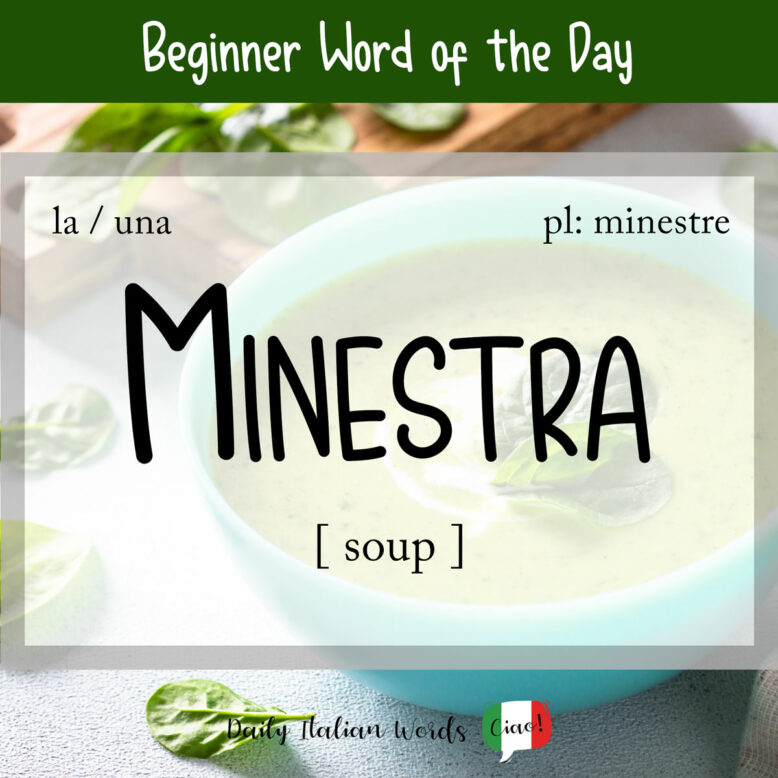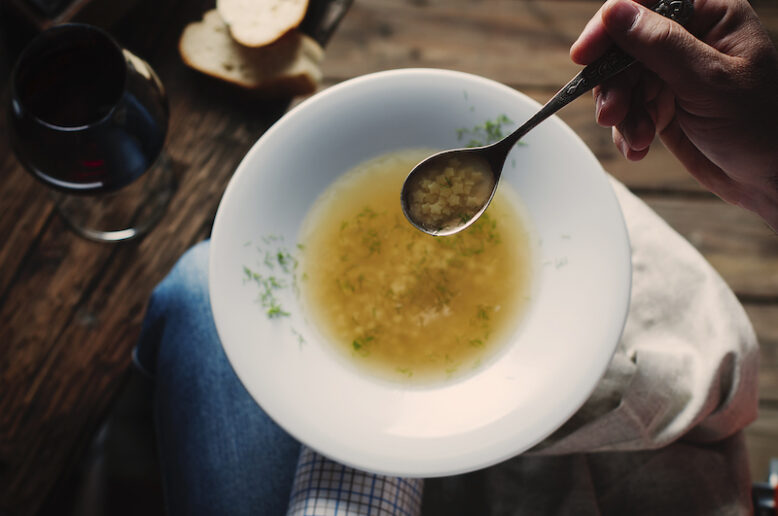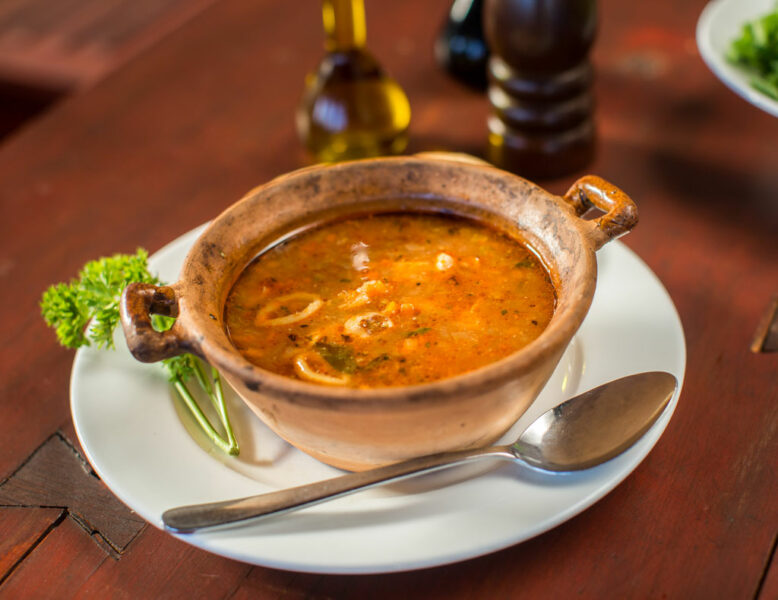On a cold wintery day, few things are more comforting than curling up with a bowl of hot minestra (feminine, plural: minestre). Minestra is just one way of saying soup in Italian, and it has a fascinating history as we’ll discover in this article!

Learn with our video
Although minestra is now a generic term for any watery soup consisting of pasta, riso (rice), legumes and verdura (vegetables), it used to denote the first course in a three-course meal, or in the case of the poor, the only course.
The word itself derives from the Latin verb minestrare which means ‘to administer’. This is because the head of the household was responsible for serving the minestra from a central bowl.
A mia mamma piace mangiare una buona minestra calda nelle fredde serate invernali.
My mum likes to eat a good warm soup on cold winter evenings.
You may have encountered the term minestra asciutta which literally translates as “dry” minestra. Today it sounds like an oxymoron but once again, it harks back to a time when minestra meant first course rather than soup. Some popular examples of minestre asciutte include risotto, ravioli and lasagna.

From minestra we also get the diminutive minestrina (lit: little soup), a light minestra given to children and ailing people, and the augmentative minestrone (masculine, lit: big soup), a thick soup consisting of rice or pasta with several kinds of vegetables and seasoning. Many Italian regions have different minestrone recipes.
Da piccolo mi ricordo il minestrone genovese che preparava la nonna.
I remember the Genoese minestrone soup grandma made when I was little.
There are also some figurative meanings. Minestra can indicate a situation or topic that is boring, repetitive and tedious. Minestrone can depict a mix of various elements that cause confusion.
- Minestra riscaldata = Same old, same old (lit: heated soup)
- È sempre la solita minestra. = It’s the same old thing.
- Quella pagina web è un minestrone di notizie poco interessanti. = That web page is a hodgepodge of not very interesting news.

Minestra vs Zuppa: What’s the difference?
Zuppa, which comes from the Gothic suppa (‘soaked bread’), is another common word for soup in Italian. Although it is easier for English speakers to remember because it sounds like soup, it doesn’t share the same ingredients as the minestra, and was once a far less respectable dish than it is today.
In Medieval times, zuppa actually referred to a simple broth containing leftover pane (bread). The nobility would eat meat and other food on large slices of bread used as plates, and these slices, saturated with the juices and seasoning of the food, were then given to the servants who cooked them with vegetables and broth. Because the bread would soak up the broth, it was a very dense soup, almost reminiscent of a stew.
Today the basic ingredients of the zuppa are very much the same as in the Middle Ages: broth, vegetables and bread but never pasta, legumes or rice. The difference is that it has gone from being a humble peasant’s meal to a well-loved dish served in restaurants across Italy.
In quel ristorante fanno una zuppa di pesce squisita!
In that restaurant they make a delicious fish soup.

There are various idiomatic expressions that use the term zuppa. One that my husband’s mother says all the time is Se non è zuppa è pan bagnato! (lit: if it’s not soup, it’s wet bread), which is the equivalent of the English expressions same difference and six of one, half a dozen of the other.
Other kinds of soup in Italy
Some other Italian dishes that we would classify as soup include:
- Passato: a blended vegetable soup without rice or pasta
- Vellutata: similar to a passato but it only contains 2-3 vegetables, cream or an egg yolk that is added to smoothen the texture
- Crema: a single vegetable puréed and mixed with rice flour or milk
This article is also available in video format on our YouTube channel. The audio version can be found on Podbean, Google Podcast, Apple Podcast and Spotify.
Heather Broster is a graduate with honours in linguistics from the University of Western Ontario. She is an aspiring polyglot, proficient in English and Italian, as well as Japanese, Welsh, and French to varying degrees of fluency. Originally from Toronto, Heather has resided in various countries, notably Italy for a period of six years. Her primary focus lies in the fields of language acquisition, education, and bilingual instruction.


